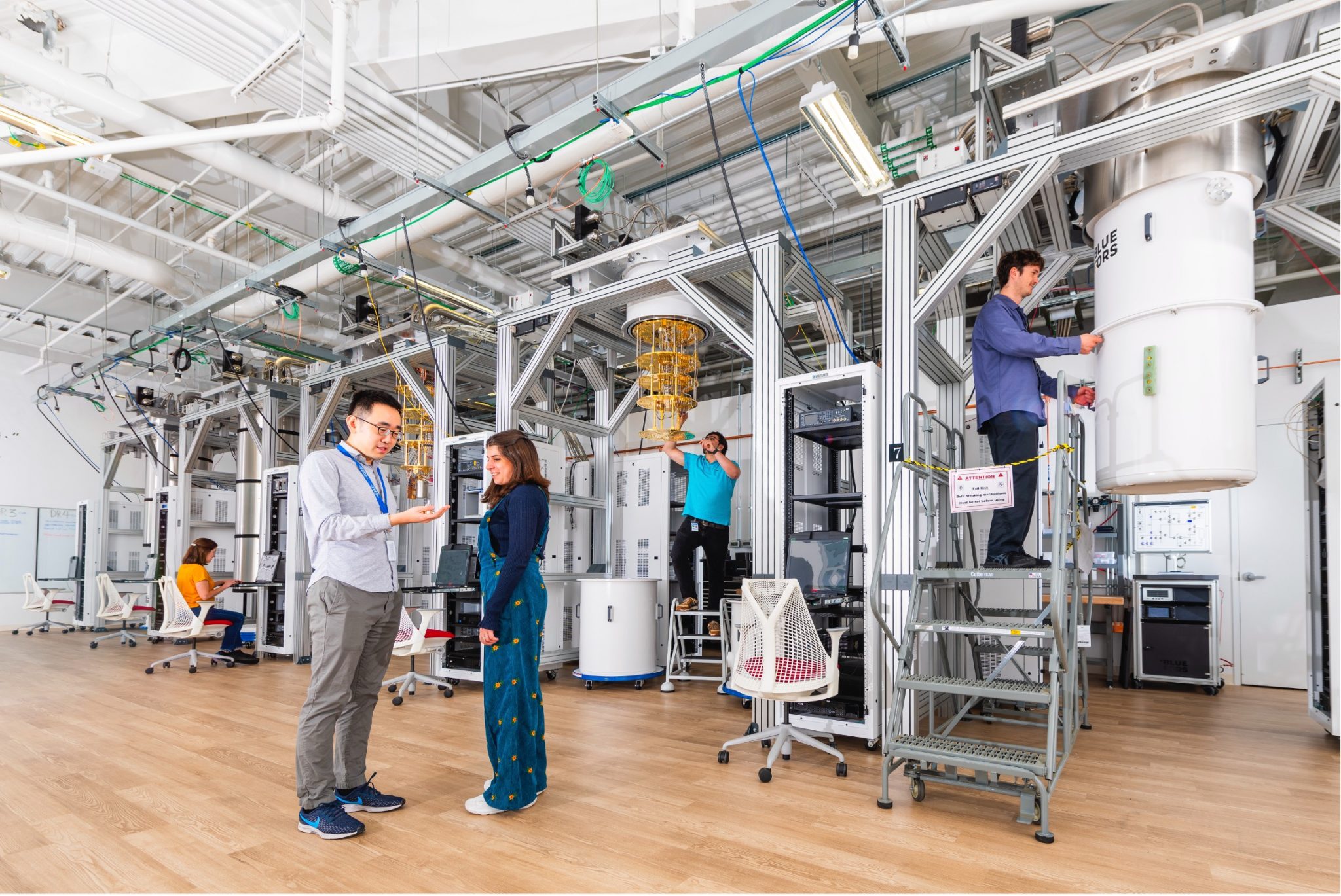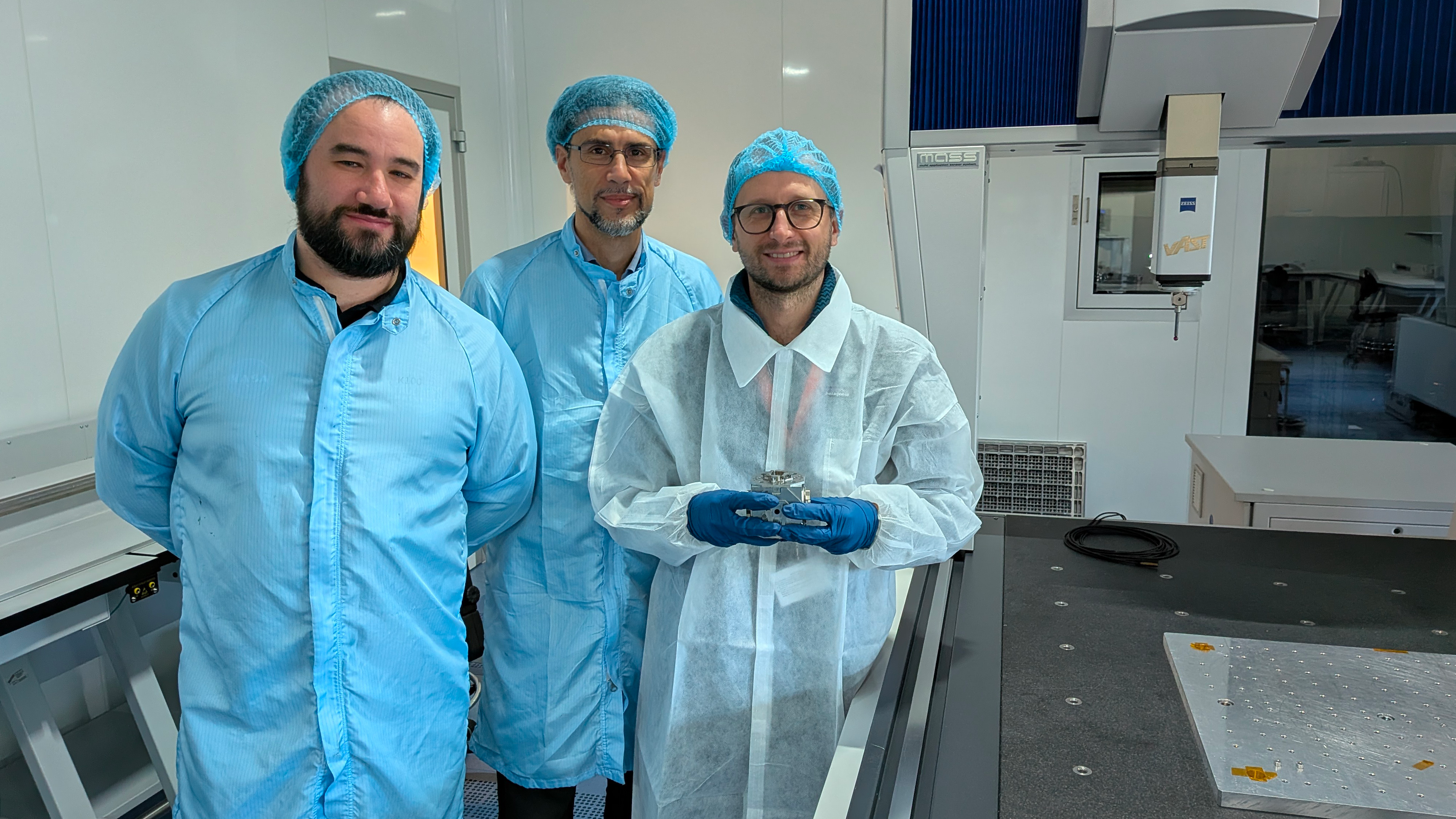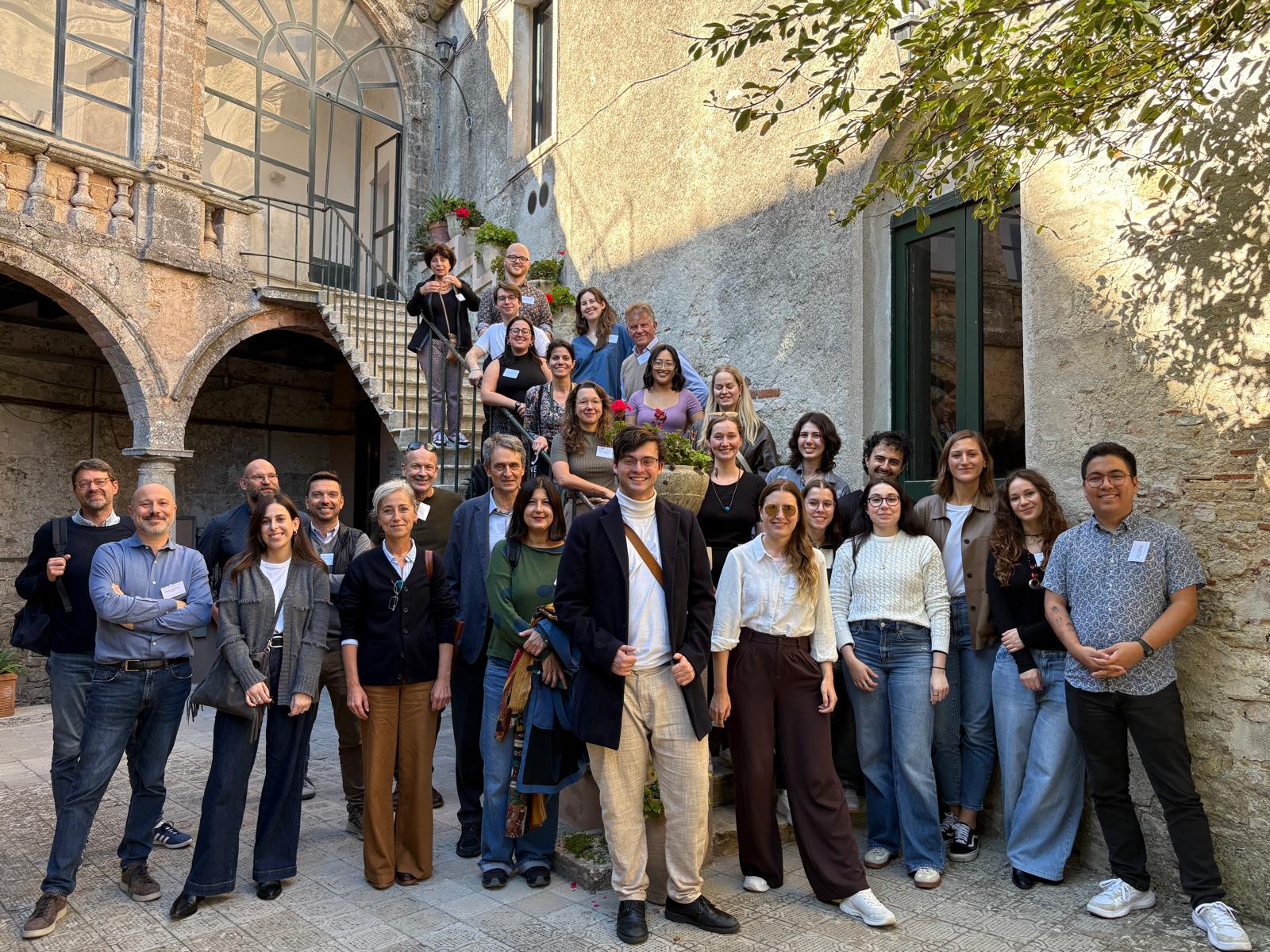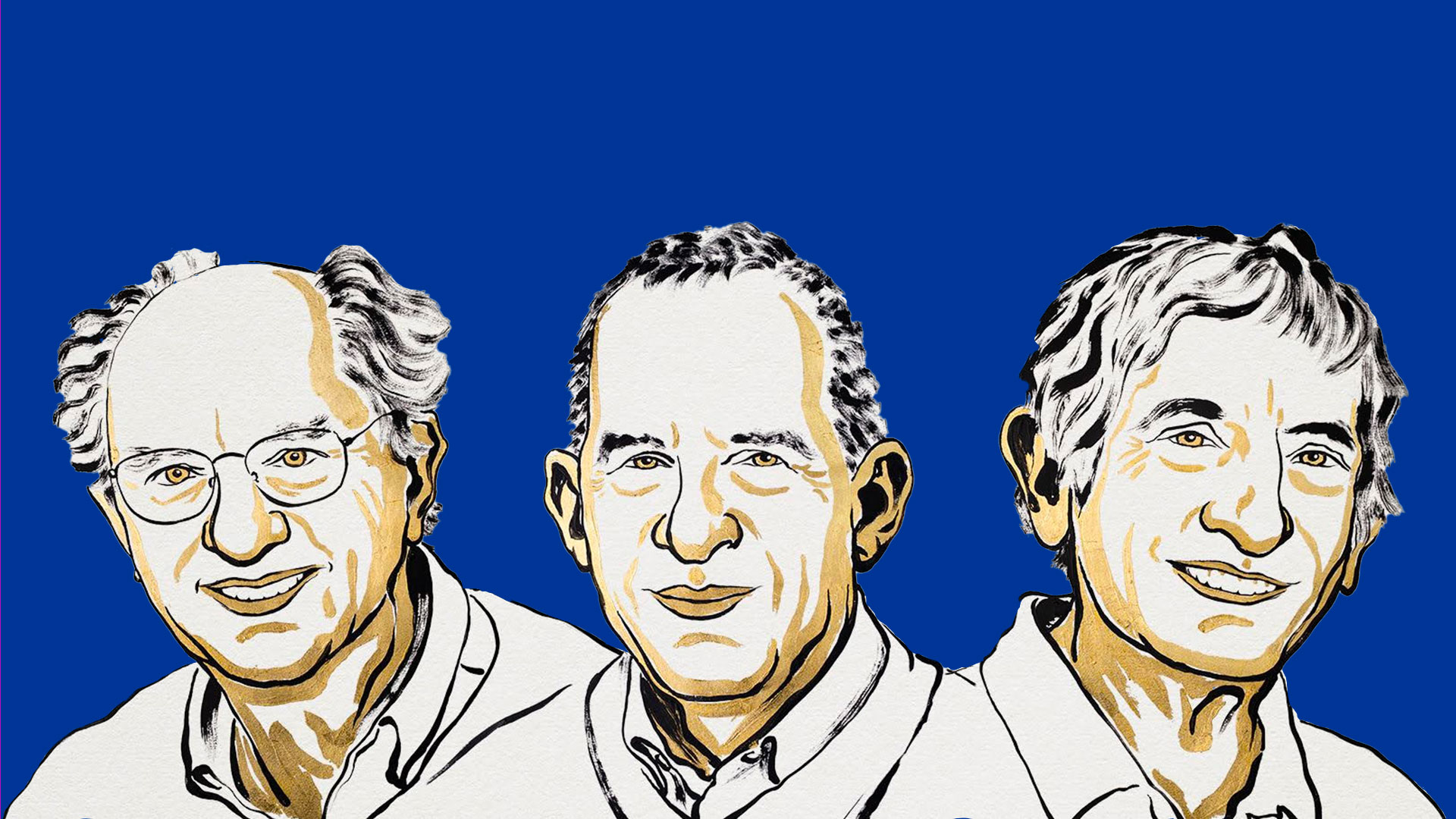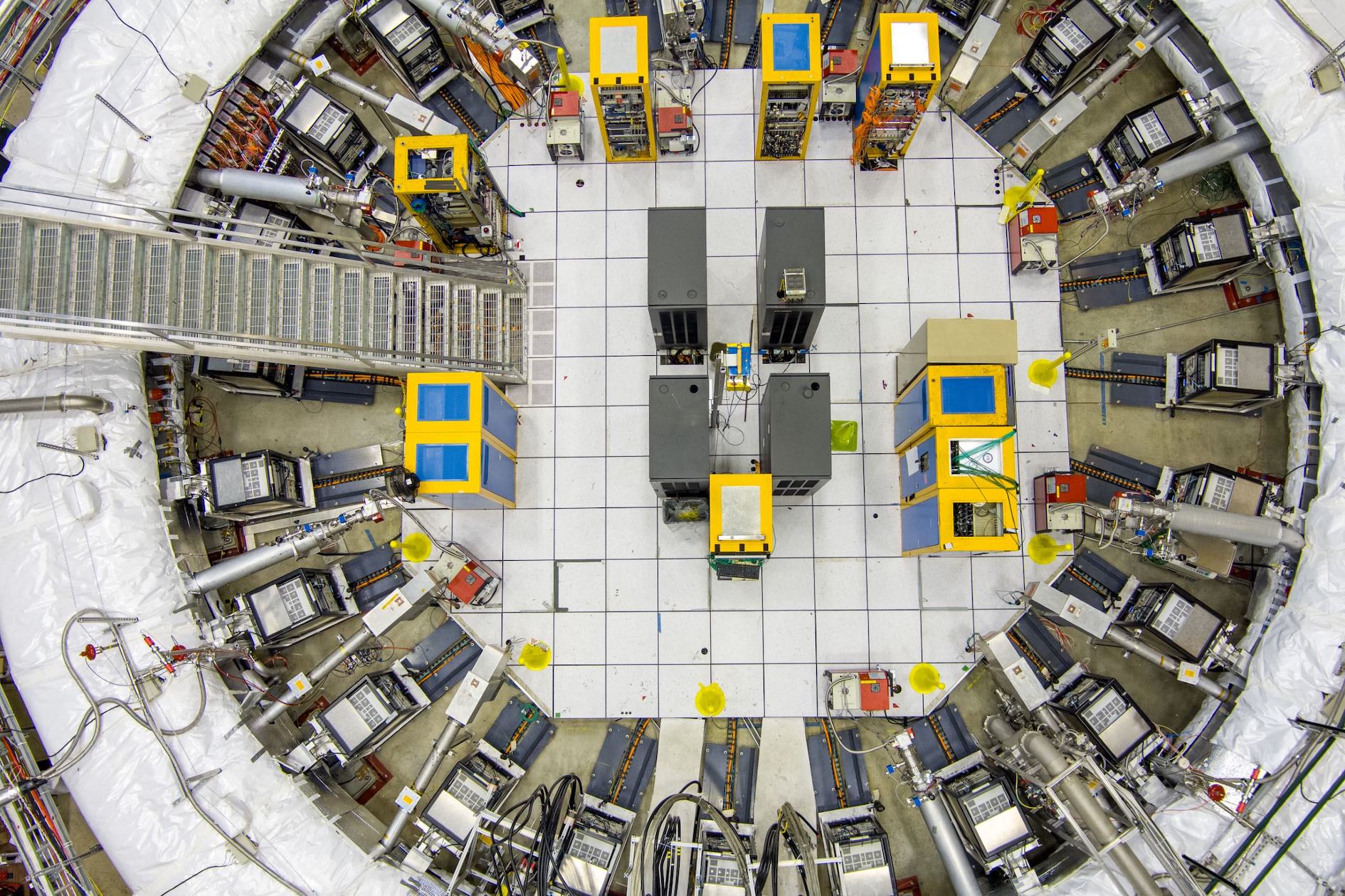 A new and even more precise measurement of a particular magnetic property of the muon, the so-called anomalous magnetic moment (indicated with the letter g), was presented during a seminar today, 10 August, by the Muon g-2 experiment scientific collaboration of the Fermi National Accelerator Laboratory (Fermilab) in Batavia, near Chicago (US). The new measurement of g, the most precise yet performed, strengthens and improves by a factor of two the measurement published in April 2021 by the same collaboration and sets up an increasingly tighter showdown between theoretical predictions and experimental measurements. The work is presented, in detail, in an article submitted for publication to Physical Review Letters by the Muon g-2 Collaboration, of which INFN has been one of the main members from the start. The new experimental result of Muon g-2, based on data collected in the first three years of experimental activities, is g-2 = 0.00233184110 +/- 0.00000000043 (statistical uncertainty) +/- 0.00000000019 (systematic uncertainty), which corresponds to a precision of 0.20 parts per million. The new experimental measurement of g-2 was improved not just thanks to a larger set of data (two years’ more data in comparison to the 2021 result were considered) but also to the technical updates made to the experiment. The Muon g-2 data acquisition concluded on 9 July 2023 when the collaboration switched off the muon beam that fed the experiment. Thus, the Muon g-2 scientific activity was concluded after six years of data collection, after reaching the goal of collecting a data set more than 21 times greater than the one collected by the previous experiment conducted in the Brookhaven laboratory. However, while the total systematic uncertainty has already exceeded the project’s goal, the addionatel, broader element contributing to the uncertainty, i.e. the statistical uncertainty (determined by the quantity of data analysed), will only be improved once all the data produced and collected over six years’ activity are incorporated into the analysis. The Muon g-2 collaboration aims to complete this goal in the next two years. The new Muon g-2 result proves to be in tension with the theoretical prediction that had been presented in 2020 by the Muon g-2 Theory Initiative. This project was founded to bring the global theoretical physics community working on determining the magnetic anomaly of the muon together, with the goal of deriving, in the context of the Standard Model, a single, shared theoretical value that can be compared with the value derived from experimental data. Considering the new experimental measurements that feed the calculations of the theoretical predictions and of a new calculation based on a different theoretical approach (the lattice gauge theory), the scientists of the Muon g-2 Theory Initiative are working on refining their prediction. Their goal is to provide, in the next two years, an improved prediction that takes into account both theoretical approaches too.
A new and even more precise measurement of a particular magnetic property of the muon, the so-called anomalous magnetic moment (indicated with the letter g), was presented during a seminar today, 10 August, by the Muon g-2 experiment scientific collaboration of the Fermi National Accelerator Laboratory (Fermilab) in Batavia, near Chicago (US). The new measurement of g, the most precise yet performed, strengthens and improves by a factor of two the measurement published in April 2021 by the same collaboration and sets up an increasingly tighter showdown between theoretical predictions and experimental measurements. The work is presented, in detail, in an article submitted for publication to Physical Review Letters by the Muon g-2 Collaboration, of which INFN has been one of the main members from the start. The new experimental result of Muon g-2, based on data collected in the first three years of experimental activities, is g-2 = 0.00233184110 +/- 0.00000000043 (statistical uncertainty) +/- 0.00000000019 (systematic uncertainty), which corresponds to a precision of 0.20 parts per million. The new experimental measurement of g-2 was improved not just thanks to a larger set of data (two years’ more data in comparison to the 2021 result were considered) but also to the technical updates made to the experiment. The Muon g-2 data acquisition concluded on 9 July 2023 when the collaboration switched off the muon beam that fed the experiment. Thus, the Muon g-2 scientific activity was concluded after six years of data collection, after reaching the goal of collecting a data set more than 21 times greater than the one collected by the previous experiment conducted in the Brookhaven laboratory. However, while the total systematic uncertainty has already exceeded the project’s goal, the addionatel, broader element contributing to the uncertainty, i.e. the statistical uncertainty (determined by the quantity of data analysed), will only be improved once all the data produced and collected over six years’ activity are incorporated into the analysis. The Muon g-2 collaboration aims to complete this goal in the next two years. The new Muon g-2 result proves to be in tension with the theoretical prediction that had been presented in 2020 by the Muon g-2 Theory Initiative. This project was founded to bring the global theoretical physics community working on determining the magnetic anomaly of the muon together, with the goal of deriving, in the context of the Standard Model, a single, shared theoretical value that can be compared with the value derived from experimental data. Considering the new experimental measurements that feed the calculations of the theoretical predictions and of a new calculation based on a different theoretical approach (the lattice gauge theory), the scientists of the Muon g-2 Theory Initiative are working on refining their prediction. Their goal is to provide, in the next two years, an improved prediction that takes into account both theoretical approaches too.
